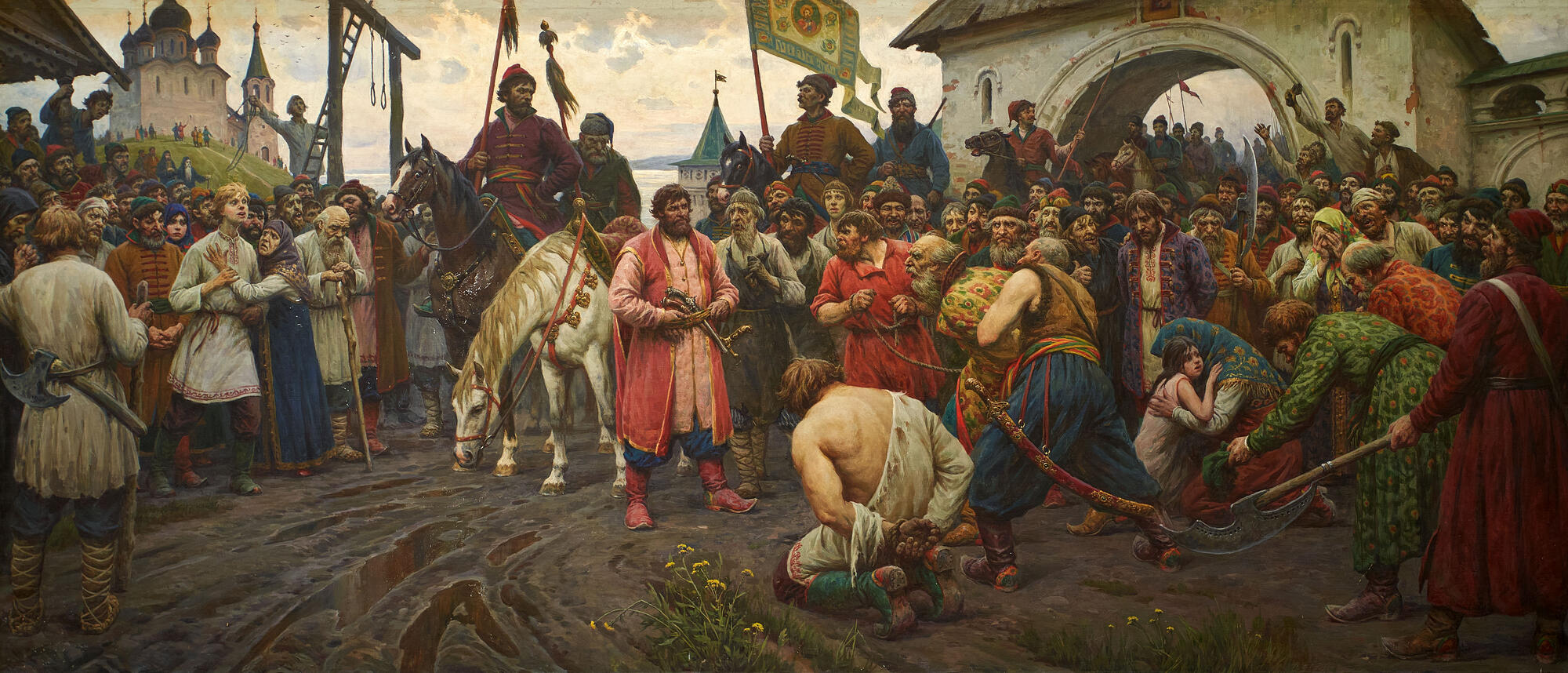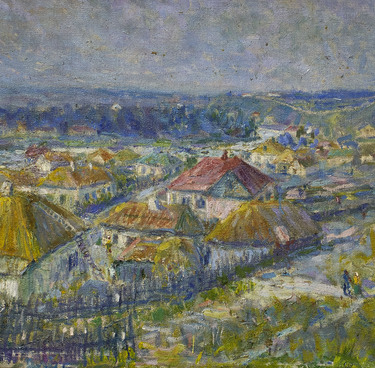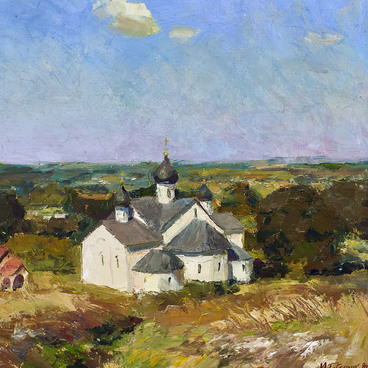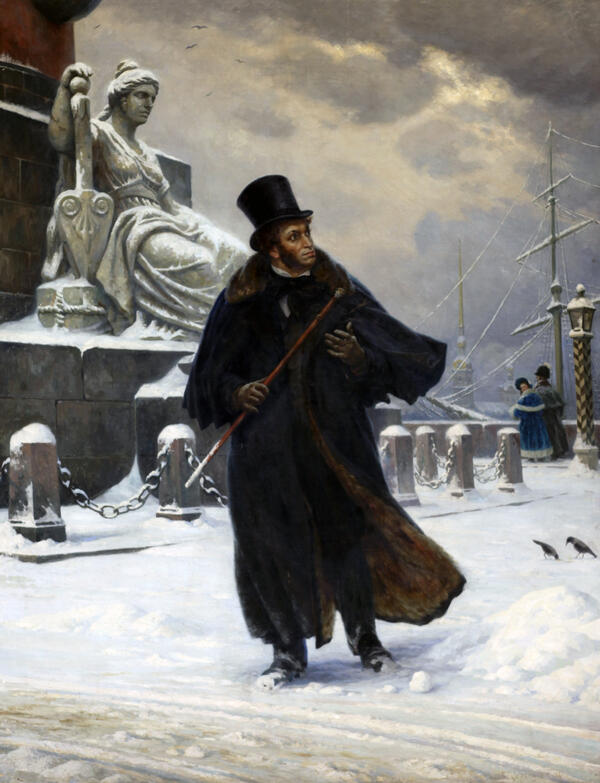The “People”s Court” canvas from the Collection of the Valuy Museum of History and Art was created by the artist Boris Shcherbakov.
The future artist was born in 1916 in Petrograd to the artist Valentin Shcherbakov, who studied with Ilya Repin. The family had to move to their father’s home in Kazan due to the October Revolution and the Civil War. It was only in the 1930s that the Shcherbakovs could return to St. Petersburg.
From 1933 to 1939, Boris Shcherbakov studied at the Academy of Arts of the USSR, where Isaac Brodsky, Vasily Yakovlev, and Petr Shukhmin used to teach.
Boris Shcherbakov became known as a master of landscape painting. It is this particular genre that made him popular. In Soviet times, Shcherbakov’s works were in demand from the Ministry of Foreign Affairs of the USSR. The staff of these departments purchased his paintings to embellish the interiors of embassies and diplomatic missions abroad and gifts to foreign heads of state.
The work of the corresponding member of the Academy of Arts of the USSR, People’s Artist of the USSR, and a laureate of the State Prize of the USSR Boris Shcherbakov are venerated both in Russia and abroad. His numerous exhibitions have always attracted public attention and received notices from critics. The artist’s work is dominated by its narrative works depicting genre scenes, as well as historical canvases, including “The Pravda Editorial Office in 1917”, “Ashes of Buchenwald, ” and many other canvases.
“People”s Court, ” which is one of the paintings in the historical cycle, was planned by Boris Shcherbakov before the Great Patriotic War. The artist”s wife used to come down to the bomb shelter in besieged Leningrad with a sketch of his work. The artist only finished the canvas in 1986.
This painting reflects the theme of peasant unrest during 1670-1671. The plot is based on the problematic destiny of a average Russian man. The work conveys the idea of people”s justice, which is implemented into the character of Stepan Razin, the Don Cossack. He is in the center of the painting and judges the boyars.
The “People”s Court” painting was purchased by the Ministry of Culture of the USSR. The canvas was first going to be donated to the State Historical Museum, but it was under restoration at that time, so the work was transferred to the Valuy Museum of History and Art.
The future artist was born in 1916 in Petrograd to the artist Valentin Shcherbakov, who studied with Ilya Repin. The family had to move to their father’s home in Kazan due to the October Revolution and the Civil War. It was only in the 1930s that the Shcherbakovs could return to St. Petersburg.
From 1933 to 1939, Boris Shcherbakov studied at the Academy of Arts of the USSR, where Isaac Brodsky, Vasily Yakovlev, and Petr Shukhmin used to teach.
Boris Shcherbakov became known as a master of landscape painting. It is this particular genre that made him popular. In Soviet times, Shcherbakov’s works were in demand from the Ministry of Foreign Affairs of the USSR. The staff of these departments purchased his paintings to embellish the interiors of embassies and diplomatic missions abroad and gifts to foreign heads of state.
The work of the corresponding member of the Academy of Arts of the USSR, People’s Artist of the USSR, and a laureate of the State Prize of the USSR Boris Shcherbakov are venerated both in Russia and abroad. His numerous exhibitions have always attracted public attention and received notices from critics. The artist’s work is dominated by its narrative works depicting genre scenes, as well as historical canvases, including “The Pravda Editorial Office in 1917”, “Ashes of Buchenwald, ” and many other canvases.
“People”s Court, ” which is one of the paintings in the historical cycle, was planned by Boris Shcherbakov before the Great Patriotic War. The artist”s wife used to come down to the bomb shelter in besieged Leningrad with a sketch of his work. The artist only finished the canvas in 1986.
This painting reflects the theme of peasant unrest during 1670-1671. The plot is based on the problematic destiny of a average Russian man. The work conveys the idea of people”s justice, which is implemented into the character of Stepan Razin, the Don Cossack. He is in the center of the painting and judges the boyars.
The “People”s Court” painting was purchased by the Ministry of Culture of the USSR. The canvas was first going to be donated to the State Historical Museum, but it was under restoration at that time, so the work was transferred to the Valuy Museum of History and Art.






